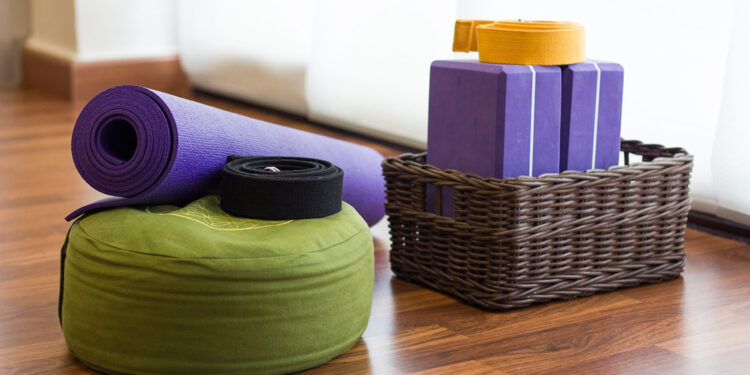Most yoga participants will bring their own mats to class, but what about additional props such as blocks, blankets, bolsters or straps? To enhance the experience of yoga classes, any facility should consider investing in props.
Erin Hoien, a yoga instructor at the Burbank Community YMCA in Burbank, California, teaches a class called “Yoga Tune Up,” which focuses on conscious corrective exercise for all levels and incorporates props. “Props are more of an extension of your body,” she said. “They help you get into the correct alignment so you can take the shapes in a better position as you are being taught.”
Hoien has had experience teaching within and outside the Y for several years. She found props had a bad reputation for many years in the yoga community, causing participants to not feel adequate enough to practice. But because classes like Yoga Tune Up focus on correct alignment rather than just getting into a posture, the opinion of props are shifting into a more positive light.
“Props help your body reach further and find its limitations so you can work within that, and be supported,” elaborated Hoien. “Your body can learn the shape and alignment, and you can eventually go deeper without injury.”
Preventing injury in yoga through the use of props is very important, especially when you have a diverse demographic in your classes. Many people, young, old, healthy, and those who have past injuries or limited range of motion, come to Hoien’s class.
This range of body shapes and types is why Hoien believes every facility should provide props for their yoga classes. When it comes to brands, she prefers Manduka recycled foam blocks because they’re sturdy, and have thick straps with buckles. Additionally, she incorporates Hugger Mugger bolsters, as well as Vera Cruz Mexican blankets, because they are less firm than others.
Hoien likens the use of props to having a good friend to talk to. “If you’re having an emotion, you can talk about it and you feel better — it’s the same with a prop — you find that shape in the confines of your body so it can learn the shape and the alignment,” she said. “Yoga is for ‘every body,’ and the props make it accessible.”










